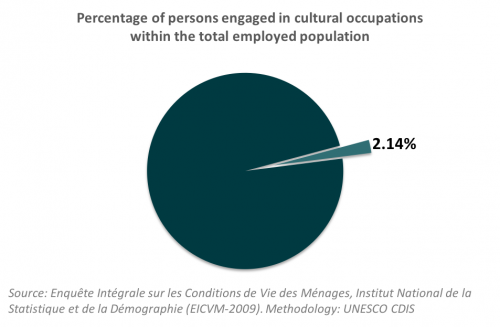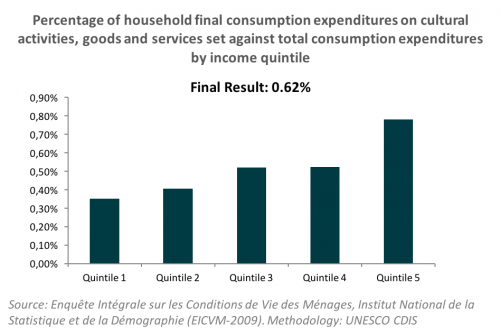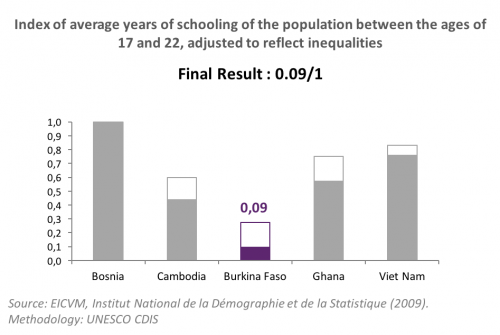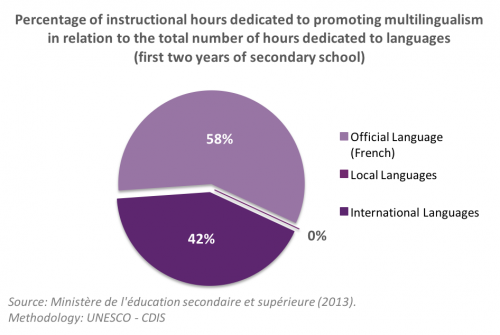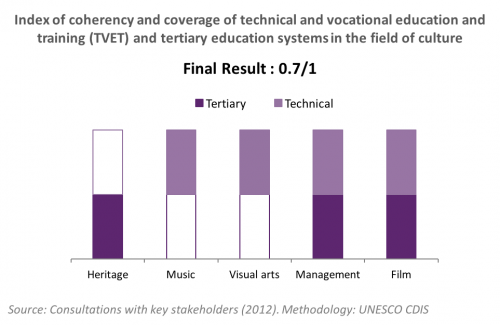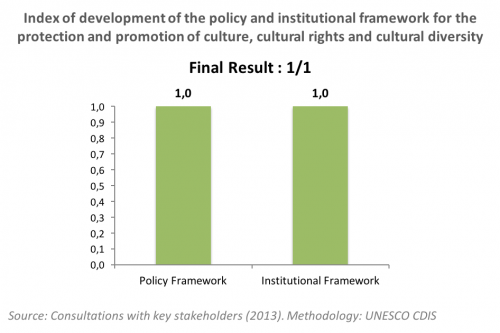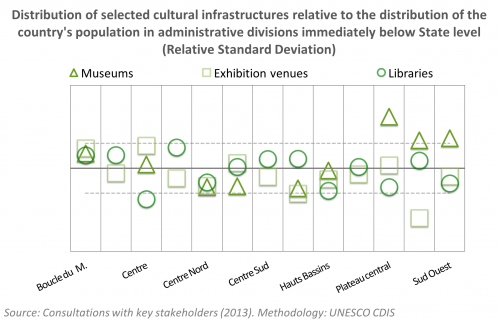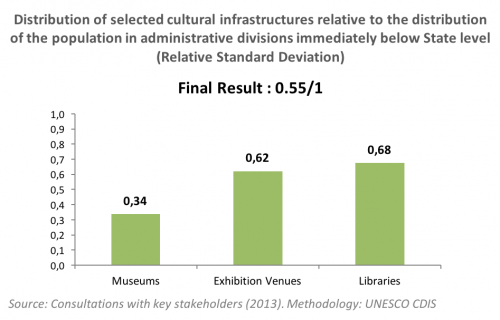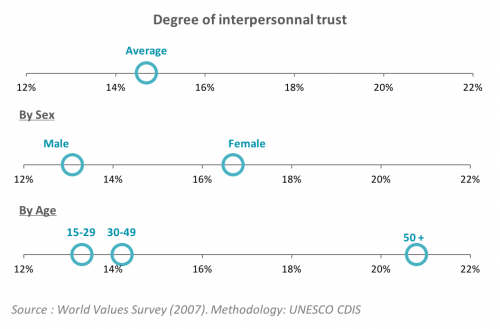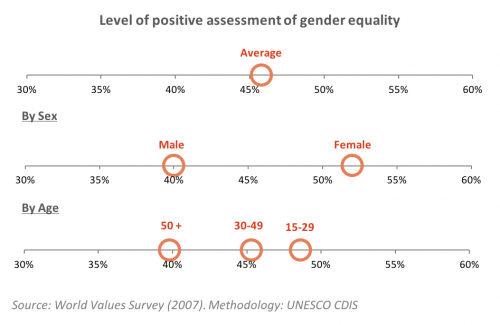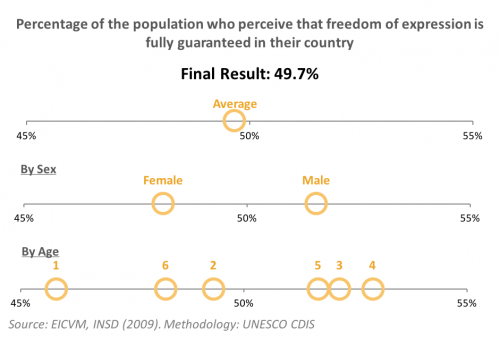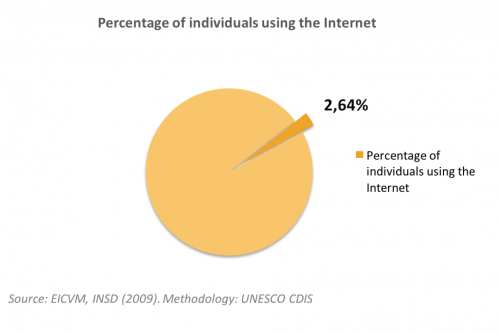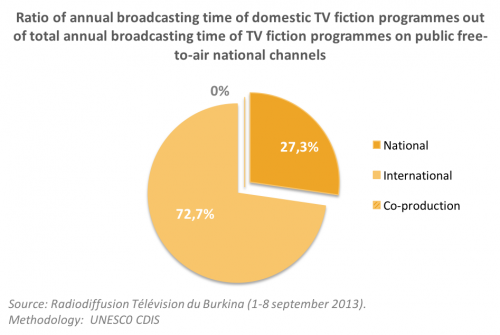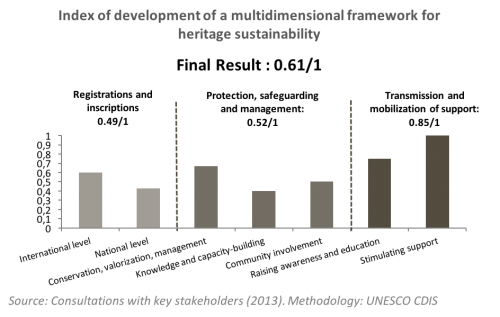22 HERITAGE SUSTAINABILITY: 0.61/1 (2013)
Burkina Faso’s result of 0.61/1 is an intermediate result regarding the establishment of a multidimensional framework for the protection, safeguarding and promotion of heritage sustainability. The degree of commitment and action taken by Burkinabé authorities is mixed and varies according to the component of the framework. While many public efforts are dedicated to raising-awareness, community involvement and stimulating support, persisting gaps regarding national level registrations and inscriptions, as well as mechanisms for conservation, management, knowledge and capacity-building, call for additional actions to improve the framework.
Burkina Faso scored 0.49/1 for registration and inscriptions indicating that while efforts have resulted in national and international registrations and inscriptions of Burkinabé sites and elements of tangible and intangible heritage, increased focus should be placed on expanding and updating registries. Burkina Faso has 241 heritage sites on their national registry, 1 of which has already received the recognition of being World Heritage - the Ruins of Loropéni (2009). In addition, forty-five elements of intangible heritage have already been documented at the national level, and 1 element has been inscribed in UNESCO's Representative List of the Intangible Cultural Heritage - the Cultural practices and expressions linked to the Balafon of the Senufo communities of Mali, Burkina Faso and Côte d'Ivoire (2012). Such recent efforts to receive international recognition suggest that the authorities of Burkina Faso remain committed to promoting their heritage. However, no list or inventory of cultural property or
database of stolen cultural objects yet exists, and increased efforts could be made to update the national intangible heritage inventory, which has not been updated in the last five years.
Burkina Faso scored 0.52/1 for the protection, safeguarding and management of heritage, indicating that there are several well-defined policies and measures, as well as efforts to build capacity and involve communities. Burkinabe authorities use various means to assure community involvement in the conservation and safeguarding of heritage. However, notable gaps in the framework can still be identified. While the Heritage Law of 2007 protects cultural and natural heritage, the law has not been modified or updated since its adoption. Other exclusions include the existence of a specialized police unit for illicit trafficking of cultural objects and the publication of regularly updated management plans for major heritage sites. Concerning training and capacity building, while the training efforts of police and customs officials against illicit trafficking are to be applauded, gaps persist concerning concrete mechanisms to combat against illicit trafficking and involve communities’ in the process. Similarly, increased efforts are needed to build capacities amongst the armed forces regarding the protection of cultural property in the case of armed conflict, as well as to build the knowledge of heritage site management staff and communities’ understanding of the safeguarding of intangible heritage. Finally, additional gaps concerning community involvement pertain to the lack of mechanisms to actively involve communities in the identification and labelling processes for tangible and intangible heritage.
Burkina Faso scored 0.85/1 for the transmission and mobilization of support, which reflects the efforts of national authorities to involve the civil society and the private sector, as well as to raise-awareness amongst the public. To raise awareness amongst youth, programs like ‘Ecole au musee,’ jointly supported by UNICEF, are carried out, and International World Heritage Day is observed to raise awareness amongst the greater public. However, although differential pricing at heritage sites exists to help promote access amongst the population, increased awareness of the meaning of heritage could be enhance by increasing signage at nationally and internationally recognized heritage sites. In addition, media campaigns could be explored as an additional means to promote heritage for development.


